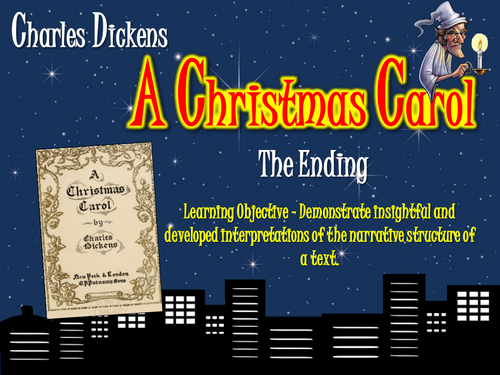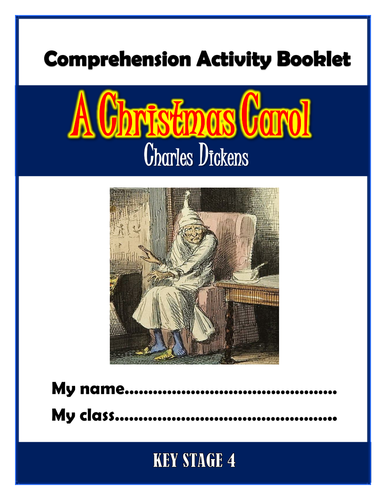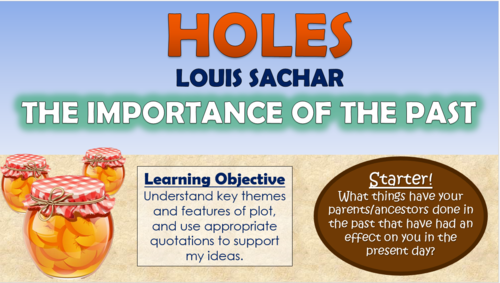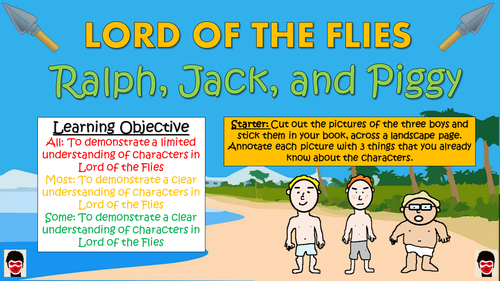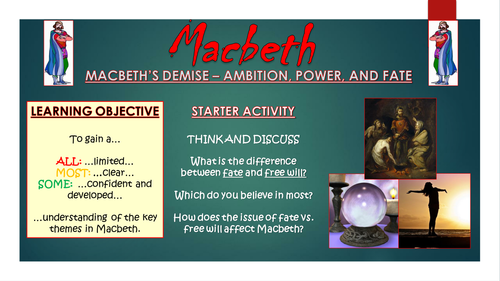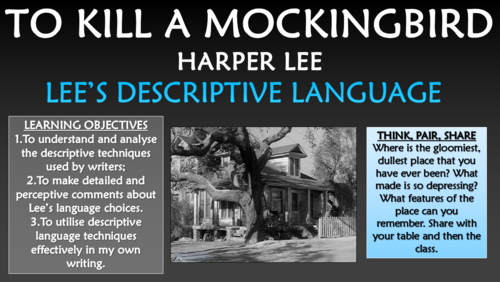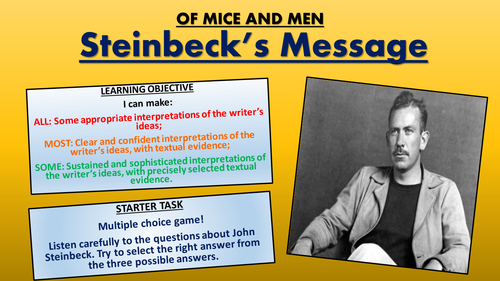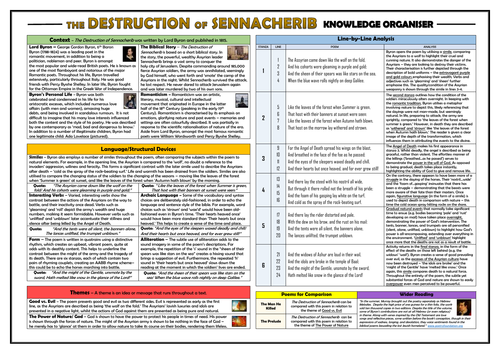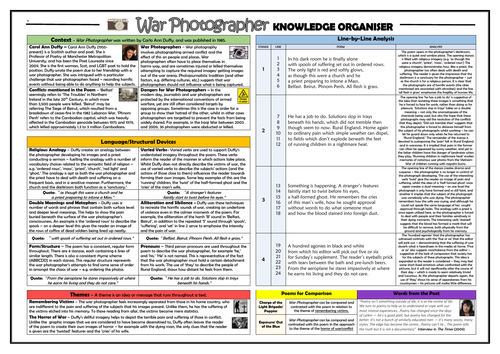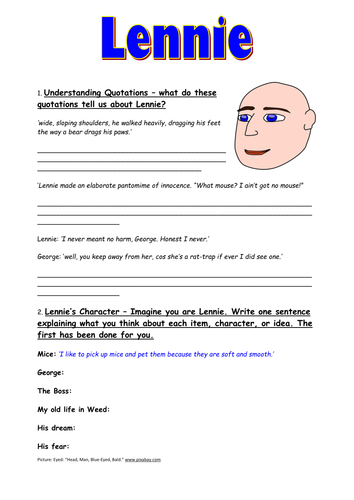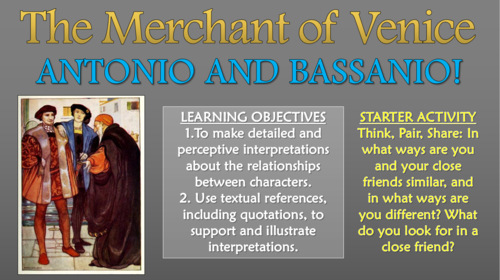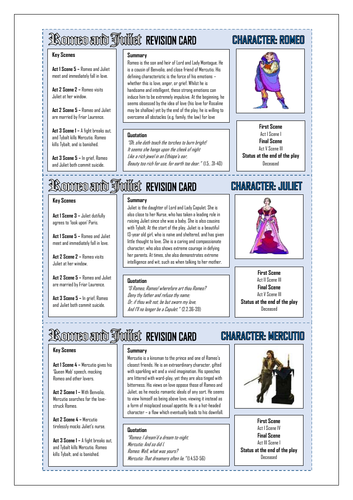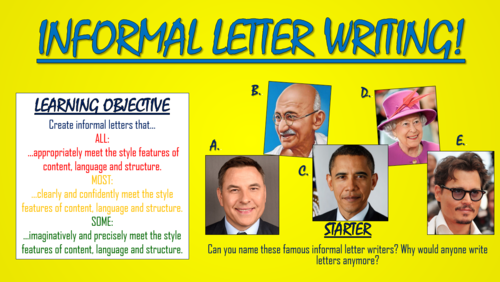
3k+Uploads
1969k+Views
2279k+Downloads
English

Writing Newspaper Articles!
This interesting and engaging enables students to know what newspaper articles are and why people read them, understand the features that make effective newspaper articles, and write their own interesting and appropriate newspaper articles. In particular, students learn to use a range of appropriate features in writing their own newspaper articles, including facts and opinions, jargon, testimonies, and puns. There are easily enough resources here for 2 lessons on this topic.
Over the course of their learning journey, students:
- Define and exemplify what newspapers are;
- Understand why people read newspapers;
- Understand and categorise the different techniques used by newspapers;
- Identify the features of newspapers in model examples;
- Analyse the effect of techniques in newspapers upon the reader;
- Use a wide-range of techniques in writing their own newspaper articles;
- Peer and self assess each other's newspaper article attempts.
The resources include:
-Visually engaging whole-lesson PowerPoint;
-A colourful and helpful 'Writing Newspaper Articles' Help-Sheet;
-Techniques cards for defining the key key features of newspaper articles;
-Analysing newspaper articles worksheet;
-Blank newspaper article template;
-A model example of a newspaper article;
-Helpful and comprehensive step-by-step lesson plan.
All images are licensed for commercial use, and are cited on the final page of the slide.

A Christmas Carol: The Ending!
This engaging and informative lesson enables students to make insightful and developed interpretations regarding the ending of Dickens’ ‘A Christmas Carol.’ In particular, they explore how the ending is in keeping with the traditional features of resolutions stage in the narrative structure model.
The lesson follows a step-by-step learning journey, in which children learn through:
- Clarifying the events leading up to the end of the novel;
- Reading and comprehending the events of Stave 5 - the end of the novel;
- Understanding the key stages of Narrative Structure and applying 'A Christmas Carol' to this model;
- Analysing Dickens' ending in relation to the key features of traditional resolutions;
- Peer assessing each other's learning attempts.
Included is:
- Whole lesson PowerPoint - colourful and comprehensive;
- Extract - Stave 5
- Narrative Structure Template;
- Analysis template with success criteria for creating well-structured responses;
- Comprehensive lesson plan.
There are also opportunities for group learning, peer assessment, and whole class discussion. This was originally taught to mixed ability year 10 groups, but can easily be differentiated for groups of different ages and abilities.
All images are licensed for commercial use, and image rights are listed on the last page of the presentation.

Holes - KS2 Comprehension Activity Booklet!
This resource booklet contains a wide range of age-appropriate, engaging, and meaningful comprehension activities for use throughout the reading of Louis Sachar's 'Holes.' Teachers have found them particularly useful in comprehension or guided reading sessions. They are perfect for aiding the progress of children towards meeting the upper KS2 expectations within the new National Curriculum framework. Children love learning from these resources, whilst they are also of great use to teachers, as there is explicit information within each task regarding which comprehension strands the task is designed to demonstrate. They also relate to key extracts, characters, and themes from the story, ensuring that children gain a deep understanding of the text.
Activities within the booklet include:
- 'An Interview with Stanley Yelnats' - to enable students to demonstrate that they can: 'Understand what is read by drawing on information from more than one paragraph, identifying key details that support the main ideas, and using quotations for illustration;'
- 'Sachar's Description' - to enable students to demonstrate that they can: 'Explain meanings of words that they know and ask the meaning of new words. Link the meaning of new words to words that they already know;'
- 'Yellow-Spotted Lizards!' - to enable students to demonstrate that they can: 'Understand what is read by drawing on information from more than one paragraph, identifying key details that support the main ideas, and using quotations for illustration;'
- 'Figurative Language in Holes' - to enable students to demonstrate that they can: 'Discuss and evaluate how authors use language, including figurative language, to create an impact on the reader.'
Plus many, many more activities (the booklet is 21 pages in length!) I've also added it as a PDF in case the formatting differs on your computer.
All images are licensed for commercial use, and are cited on a separate document (included).

Tissue - Imtiaz Dharker - Knowledge Organiser/ Revision Mat!
This detailed and visually-appealing resource offers a complete reference point for students learning or revising Imtiaz Dharker’s power and conflict poem 'Tissue.’ It contains comprehensive sections on:
Context;
Line-by-Line Analysis;
Poetic Devices/ Language Devices;
Themes;
Form/Structure;
Poems for Comparison;
The Poet’s Influences.
Key words and ideas are underlined for easy reference. The resource is designed to be printed onto A3, and is provided as both a PDF and a Word version (so that you can edit if you want to). All images used are licensed for commercial use and are cited on a separate document (included).

A Christmas Carol Comprehension Activities Booklet!
This resource booklet contains a wide range of age-appropriate, engaging, and meaningful comprehension activities for use throughout the reading of Charles Dickens' 'A Christmas Carol.' Teachers have found them particularly useful in exam revision, comprehension tasks, or guided reading sessions. They are perfect for aiding the progress of students towards meeting the KS4 expectations within the new National Curriculum framework - this makes the tasks suitable for all examining bodies. Students have found these resources extremely engaging, and for teachers there is explicit information within each task regarding which comprehension strands the task is designed to demonstrate. They also relate to key extracts, characters, and themes from the story, ensuring that students gain a deep understanding of the text.
Activities within the booklet include:
- 'Context: 19th Century Britain' - to aid students with 'Drawing on knowledge of the purpose, audience and context of the writing, including its social, historical and cultural context and the literary tradition to which it belongs, to inform evaluation;'
- 'Dickens' Description' - to aid students with 'Analysing a writer’s choice of vocabulary, form, grammatical and structural features, and evaluating their effectiveness and impact;'
- 'The Ghost of Christmas Past' - to aid students with 'Seeking evidence in the text to support a point of view, including justifying inferences with evidence;'
- 'Editing the Text' - to aid students with 'Making an informed personal response, recognising that other responses to a text are possible and evaluating these.'
Plus many, many more activities (the booklet is around 30 pages in length!) I've also added it as a PDF in case the formatting differs on your computer.
All images are licensed for commercial use, and are cited on a separate document (included).

Macbeth: The Context of Macbeth
This engaging and interesting lesson aims to improve students’ understanding of the context of the of William Shakespeare’s Macbeth. Some of the primary topics that are addressed are William Shakespeare himself, James I and superstition, witches and witchcraft, religion, mortality rates, and the theatre. This knowledge should enable students to make convincing links between the play and the events of the time. It is a vital lesson in any Macbeth theme that can be taught before, during, or after reading.
The lesson uses a range of tasks, that require students to be visual and interactive learners. It follows this learning journey:
- Understanding who William Shakespeare was, and remembering key details about his life;
- Identifying words and phrases that he coined that are still in use today;
- Taking part in a quiz about the some of the more basic key events and ideas of the time;
- Researching the key events of the time (e.g. witch-hunts and the ascension of James I as King) and understanding which ideas were prominent. (e.g. divine right and religion)
- Utilising speaking and listening skills in order to communicate gathered knowledge, and obtain knowledge from others.
- Evaluating the learning in the lesson.
All images in this resource are licensed for commercial use, and are cited on the final slide of the lesson presentation.

Holes - The Importance of the Past!
This engaging and informative lesson helps students to understand one of the main recurring themes in Louis Sachar’s Holes: The effect of the past upon the present. Students study several of the flashbacks in Sachar’s non-linear narrative, and establish how different objects, ideas, and settings are evidence of the links between past and present at Camp Green Lake.
The lesson follows a step-by-step learning journey, in which children learn through:
- Reading and understanding the selected extracts to comprehend how past and present events are linked at Camp Green Lake;
- Exploring different objects and ideas, such as the spiced peaches and the treasure, to demonstrate how different sub-plots are interwoven;
- Using textual evidence to show a deeper understanding of the writer's purpose in linking the features of past and present together;
- Analysing how the effect of the past becomes an effective theme throughout the story;
- Peer assessing each other's learning attempts;
Included is:
- Whole lesson PowerPoint - colourful and comprehensive;
- 'Text Detectives' worksheet - (PDF and Word versions);
- Selected extract - Chapter 7;
- Essay template for analytical paragraphs;
- Comprehensive lesson plan.
There are also opportunities for group learning, speaking and listening, peer assessment, and whole class discussion. I originally used these resources with year 7 and 8 classes, however colleagues have used them for between years 4 and 9 with minimal adaptations.
All images are licensed for commercial use, and image rights are listed on the last page of the presentation.

A Poison Tree Knowledge Organiser/ Revision Mat!
This detailed and visually-appealing resource offers a complete reference point for students learning or revising William Blake’s power and conflict poem 'A Poison Tree.’ It contains comprehensive sections on:
Context;
Line-by-Line Analysis;
Poetic Devices/ Language Devices;
Themes;
Form/Structure;
Poems for Comparison;
Wider Reading.
Key words and ideas are underlined for easy reference. The resource is designed to be printed onto A3, and is provided as both a PDF and a Word version (so that you can edit if you want to). All images used are licensed for commercial use and are cited on a separate document (included).

Formal Letter Writing!
This stimulating and informative lesson develops students’ skills in creating formal letters that precisely meet the content, language and structural features of the form. In particular, they gain an in-depth understanding of how formal letters should be set out on the page, what information should be included within them, and what style they should be written in, in order to meet form, audience and purpose.
Students follow a clear and logical learning journey, in which they:
-Understand when and where formal letters are an appropriate form of communication;
-Unjumble a model example of a formal letter in order to establish its structure;
-Work collaboratively to identify and analyse the content and language features in further model examples of formal letters;
-Create a success criteria for effective formal letters (although a ready-made success criteria is included);
-Write their own formal letters, using a structure strip and helpsheet (if needed) and the techniques that they have learnt;
-Peer/self-assess their writing attempts.
There are enough resources here really for two lessons, including:
-Visually engaging whole-lesson PowerPoint;
-Formal letters x 3 (a complaint, information about a school trip, and a covering letter for a job application)
-Formal letters structure strip;
-Formal letters helpsheet;
-Step-by-step lesson plan.
All images are licensed for commercial use, and are cited on the final page of the slide.

Lord of the Flies: Ralph, Jack, and Piggy
This interesting and highly-stimulating lesson enables students to gain a clear understanding of how the characters of Ralph, Jack, and Piggy are introduced and developed in William Golding’s Lord of the Flies. Students learn to analyse the characters, with particular reference to the dramatization of the conflict between the characters’ instincts of savagery and civility, and how their psyche alters over time.
The lesson follows a clear, logical, bite-size learning journey, which guides students towards differentiated learning objectives. Over the course of this journey, they become able to:
- Use illustrations to explain what they already know about each of the characters;
- Understand how each of the characters are introduced, and demonstrate an awareness of the role that they play on the island;
- Read and understand Chapters Two and Three of the play, with a particular focus upon how the the characters of Ralph, Jack, and Piggy develop over time;
- Analyse key quotations about/by each of the three main characters, highlighting how their psyche is altering;
- Complete two diary entries from the viewpoint of one of the characters, showing a clear understanding of how the character has developed;
-Peer assess each other's learning attempts.
This resource pack includes:
- A visually engaging whole-lesson PowerPoint presentation;
- Detailed worksheets, with answer sheets where necessary;
- Links to the extracts of the text needed for the lesson (Chapters Two and Three in this case);
- Original images for students to complete their annotations;
- A detailed lesson plan, complete with what the teacher and students should aim to achieve at each stage of the lesson.
All images are licensed for commercial use, and are cited on the final slide of the PowerPoint.

Macbeth: The Demise of Macbeth - Ambition, Power, and Fate
This lesson aims to improve students’ understanding of the key themes throughout William Shakespeare’s ‘Macbeth:’ ambition, power, and fate. In particular, students learn how the combination of these three ideas contribute to Macbeth’s eventual downfall, whilst drawing on their analytical reading skills to understand how the themes interweave with the plot throughout the play.
The lesson utilises a range of tasks, that require students to be visual and interactive learners. It follows this learning journey:
- Defining the key terms 'fate' and 'free will', and establishing their relevance within the play;
- Reading and interpreting Act 5 Scene 8, and establishing how Macbeth's death was set in motion long before the battlefield;
- Mapping Macbeth's demise, from his early success as a brave and respected warrior, to his death as a tyrant king;
- Understanding and analysing how the key themes of ambition, power, and his belief in fate contributed to his downfall;
- Peer/self evaluating the learning in the lesson.
Included in this resource pack are:
- A well-presented, thorough, and informative, whole-lesson PowerPoint presentation;
- Resources for the reading and interpreting activity - full scene transcript with space for notes;
- A template and instructions for the 'Mood Mapping' task;
- A template to help scaffold the main task, complete with P.E.E instructions;
- A comprehensive teacher guidance form/lesson plan to assist delivery.
All images in this resource are licensed for commercial use, and are cited on the final slide of the lesson presentation.

To Kill a Mockingbird - Lee's Descriptive Language!
This engaging and informative lesson enables students to make precise and detailed interpretations of Harper Lee’s language choices throughout To Kill a Mockingbird. In particular, students identify and analyse the effect of Lee’s language in her descriptions of settings in the novel, using precisely selected extracts, before applying these concepts to their own descriptive writing attempts.
The lesson follows a step-by-step learning journey, in which children learn through:
Defining and exemplifying the descriptive writing techniques, through a fun and interactive bingo game;
Identifying the language techniques that Lee uses in her descriptions of settings in the novel;’
Analysing the effectiveness of Lee’s descriptive writing;
Creating their own descriptions of settings, using Lee’s model examples, a structure strip, and the techniques that they have gathered over the course of the lesson;
Peer assessing each other’s learning attempts;
Included is:
Whole lesson PowerPoint - colourful and comprehensive;
Bingo Cards
Teacher’s Bingo Questions/Guidance;
Selected extracts (from chapters 1, 12 and 15);
Descriptive Writing Structure Strip;
Descritpive Writing Helpsheet;
Comprehensive Lesson Plan.
There are also opportunities for group learning, speaking and listening, peer assessment, and whole class discussion. I originally used these resources with year 10 and 11 classes, however colleagues have used them for between year 8 and year 13 with some adaptations.
All images are licensed for commercial use, and image rights are listed on the last page of the presentation.

Of Mice and Men: Steinbeck's Message
This engaging and interesting lesson aims to improve students' knowledge of John Steinbeck's key messages in his novella Of Mice and Men. It also aims to build their skills in retrieving information from texts, considering the outcomes about the characters, and making precise and confident interpretations about Steinbeck's intentions.
The lesson uses a range of tasks, that require students to use their visual and interpersonal skills. It follows this learning journey:
- Investigating the life of John Steinbeck, including his influences, experiences, and beliefs;
- Finding relevant quotations to ascertain which characters fulfilled their dreams, and what this could tell us about Steinbeck's message;
- Completing analysis paragraphs on how Steinbeck reveals his message through the final chapters of the text, using a template and a success criteria;
- Evaluating each others' argumentative attempts.
The resource includes a comprehensive and visually engaging PowerPoint presentation, a worksheet to decipher which characters achieved their dreams, a template and success criteria for the main task, and a lesson plan/ teacher guidance sheet.
All images in this resource are licensed for commercial use, and are cited on the final slide of the lesson presentation.
You can choose to buy this resource alone, or as part of the 'Of Mice and Men - All Lessons and Scheme' bundle, which contains seven full lessons, resources, teachers notes, and PowerPoint presentations, plus a Pointless Of Mice and Men game, for just £5!

The Destruction of Sennacherib Knowledge Organiser/ Revision Mat!
This detailed and visually-appealing resource offers a complete reference point for students learning or revising Lord Byron’s power and conflict poem 'The Destruction of Sennacherib.’ It contains comprehensive sections on:
Context;
Line-by-Line Analysis;
Poetic Devices/ Language Devices;
Themes;
Form/Structure;
Poems for Comparison;
The Poet’s Influences.
Key words and ideas are underlined for easy reference. The resource is designed to be printed onto A3, and is provided as both a PDF and a Word version (so that you can edit if you want to). All images used are licensed for commercial use and are cited on a separate document (included).

War Photographer - Carol Ann Duffy - Knowledge Organiser/ Revision Mat!
This detailed and visually-appealing resource offers a complete reference point for students learning or revising Carol Ann Duffy’s power and conflict poem 'War Photographer.’ It contains comprehensive sections on:
Context;
Line-by-Line Analysis;
Poetic Devices/ Language Devices;
Themes;
Form/Structure;
Poems for Comparison;
The Poet’s Influences.
Key words and ideas are underlined for easy reference. The resource is designed to be printed onto A3, and is provided as both a PDF and a Word version (so that you can edit if you want to). All images used are licensed for commercial use and are cited on a separate document (included).

Of Mice and Men - Characterisation of Lennie
This informative and engaging lesson aims to improve students' knowledge and understanding of the character of Lennie in Steinbeck's Of Mice and Men. It also aims to improve their analytical skills, so that they can demonstrate sustained and sophisticated interpretations of the character.
This pack includes the full lesson presentation, with animations and key information, a worksheet with clear and concise instructions, an example analysis extract, and full teacher guidance. The learning journey is clear and progressive, following a pathway of progressively more difficult tasks, including:
- An engaging memory game task to recognise and remember items and ideas that are related to the character of Lennie;
- A worksheet that enables students to demonstrate understanding of key quotations about Lennie, and to link Lennie to key themes and ideas.
- Close reading of a modelled example analysis paragraph;
- Joint creation of an analysis success criteria;
- An opportunity to answer an exam style question based upon the character of Lennie;
- A chance to peer assess against the success criteria.
Students should have read, (or during this lesson read) up to the section in which George and Lennie meet their new boss, in order to fully access the lesson.
All images are licensed for commercial use, and are cited on the final slide of the presentation.
You can choose to buy this resource alone, or as part of the 'Of Mice and Men - All Lessons and Scheme' bundle, which contains seven full lessons, resources, teachers notes, and PowerPoint presentations, plus a Pointless Of Mice and Men game, for just £5!
-

The Prelude (Extract) Knowledge Organiser/ Revision Mat!
This detailed and visually-appealing resource offers a complete reference point for students learning or revising William Wordsworth’s power and conflict poem 'The Prelude.’ It contains comprehensive sections on:
Context;
Line-by-Line Analysis;
Poetic Devices/ Language Devices;
Themes;
Form/Structure;
Poems for Comparison;
The Poet’s Influences.
Key words and ideas are underlined for easy reference. The resource is designed to be printed onto A3, and is provided as both a PDF and a Word version (so that you can edit if you want to). All images used are licensed for commercial use and are cited on a separate document (included).

The Merchant of Venice - Antonio and Bassanio!
This engaging and informative lesson enables students to make clear and precise interpretations regarding the relationship between Antonio and Bassanio in Shakespeare’s The Merchant of Venice. In particular, students read and understand Act one scene one of the play, interpreting how Antonio and Bassanio’s relationship is introduced, before tracking how their friendship develops over the course of the play.
The lesson follows a step-by-step learning journey, in which children learn through:
Considering the key components of strong friendships;
Reading Act One Scene One and comprehending how Antonio and Bassanio’s friendship is introduced;
Tracking how their friendship develops over the play, using apt textual evidence;
Considering multiple interpretations of Antonio and Bassanio’s relationship;
Applying their understanding of Antonio and Bassanio’s relationship to create an original composition;
Self assessing their learning attempts;
Included is:
Whole lesson PowerPoint - colourful and comprehensive;
Antonio and Bassanio development worksheet;
Extract - Act One Scene One
Character profile template
Comprehensive lesson plan.
Resources are provided in PDF (to maintain formatting), Word (so that they are easily editable) and also in zipfiles.
The lesson contains opportunities for group learning, speaking and listening, peer assessment, and whole class discussion. I originally used these resources with year 10 and 11 classes, however colleagues have used them for between year 9 and year 13 with some adaptations.
All images are licensed for commercial use, and image rights are listed on the last page of the presentation.

Romeo and Juliet Revision Cards!
These colourful, comprehensive, and well-structured revision cards have been creatively designed for students securing their understanding of William Shakespeare’s tragedy ‘Romeo and Juliet.’ Each card is visually-appealing and highly-detailed, covering aspects of each feature including a full summary, cited quotations from the play, definitions/ examples, and a consideration of audience reactions. They are tried and tested, with teachers incorporating them in revision games, using them as essay writing aids, or utilising them as home revision aids. They are provided as both PDFs (to prevent formatting issues between computers) and as Word documents (for easy editing).
The revision cards included in this pack are:
Characters - Romeo, Juliet, Mercutio, Friar Laurence, The Nurse, Tybalt;
Context - William Shakespeare, Patriarchal Society, Religion;
Devices - Dramatic Irony, Soliloquies, Dramatic Tension;
Scenes - Act 1 Scene 5 (The Masquerade Ball Scene), Act 2 Scene 2 (Juliet’s Window Scene), Act 3 Scene 1 (The Death of Mercutio/ Tybalt Fight Scene);
Themes - Love, Hatred, Fate and Free Will.
For any questions or comments, please contact TandLGuru@yahoo.co.uk - Many thanks!

Informal Letter Writing!
This stimulating and informative lesson develops students’ skill in creating informal letters that precisely meet the content, language and structural features of the form. In particular, they gain an in-depth understanding of how informal letters should be set out on the page, what information should be included within them, and what style they should be written in, in order to meet form, audience and purpose.
Students follow a clear and logical learning journey, in which they:
-Understand why letter writing is still important in the present day;
-Unjumble a model example of an informal letter in order to establish its structure;
-Work collaboratively to identify and analyse the content and language features in further model examples of informal letters;
-Create a success criteria for effective informal letters (although a ready-made success criteria is included);
-Write their own informal letters, using a structure strip and helpsheet (if needed) and the techniques that they have learnt;
-Peer/self-assess their writing attempts.
There are enough resources here really for two lessons, including:
-Visually engaging whole-lesson PowerPoint;
-Informal letters x 3 (based on The Simpsons, Batman, and Harry Potter characters)
-Informal letters structure strip;
-Informal letters helpsheet;
-Step-by-step lesson plan.
All images are licensed for commercial use, and are cited on the final page of the slide.


